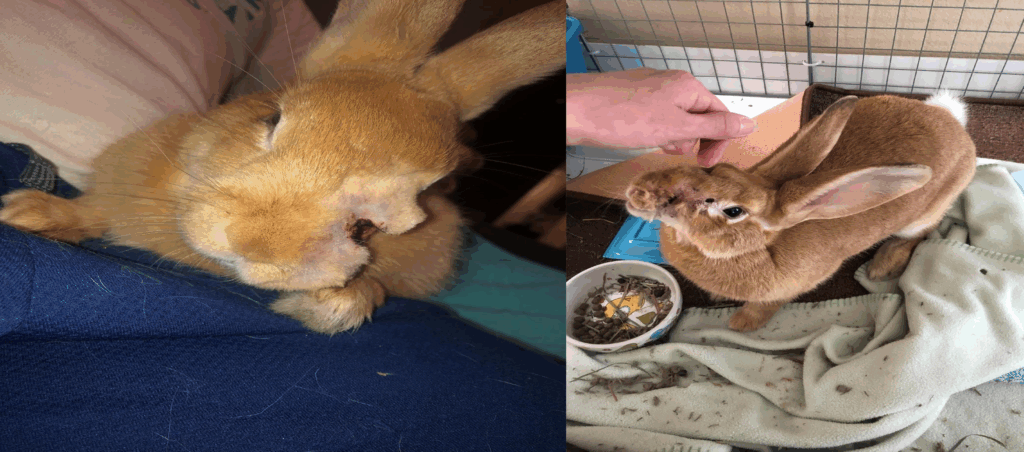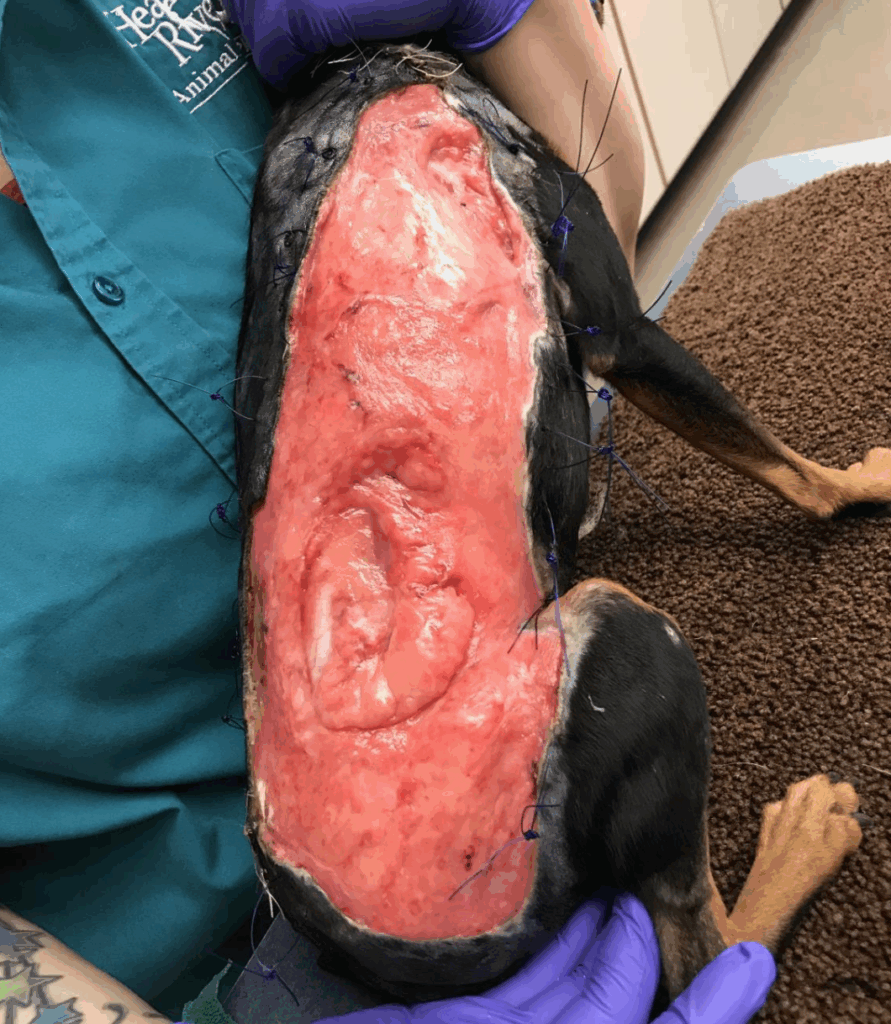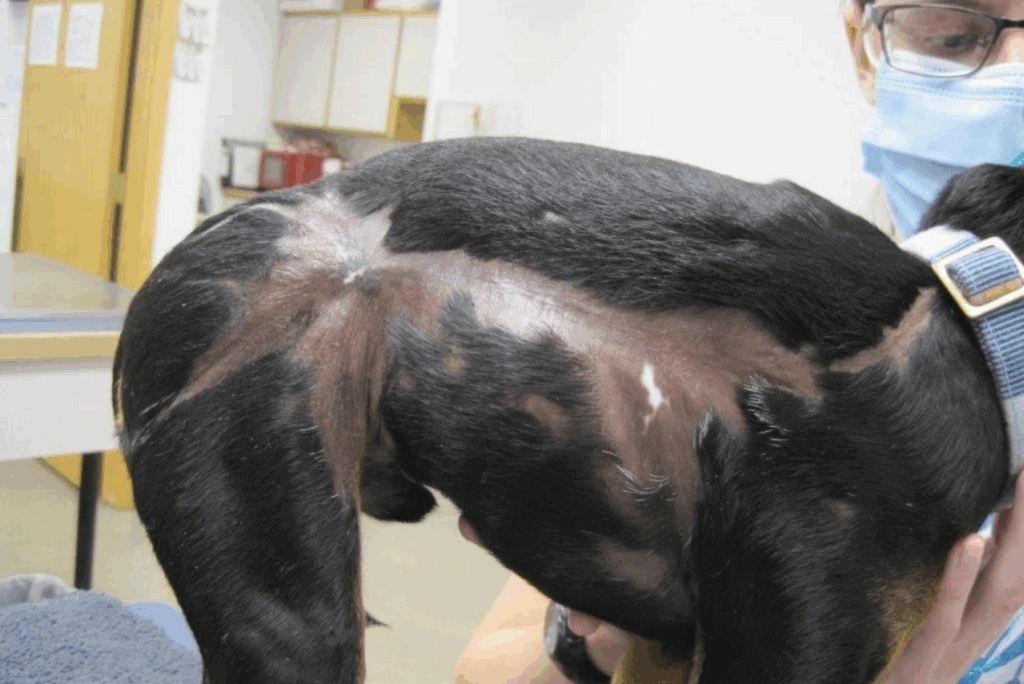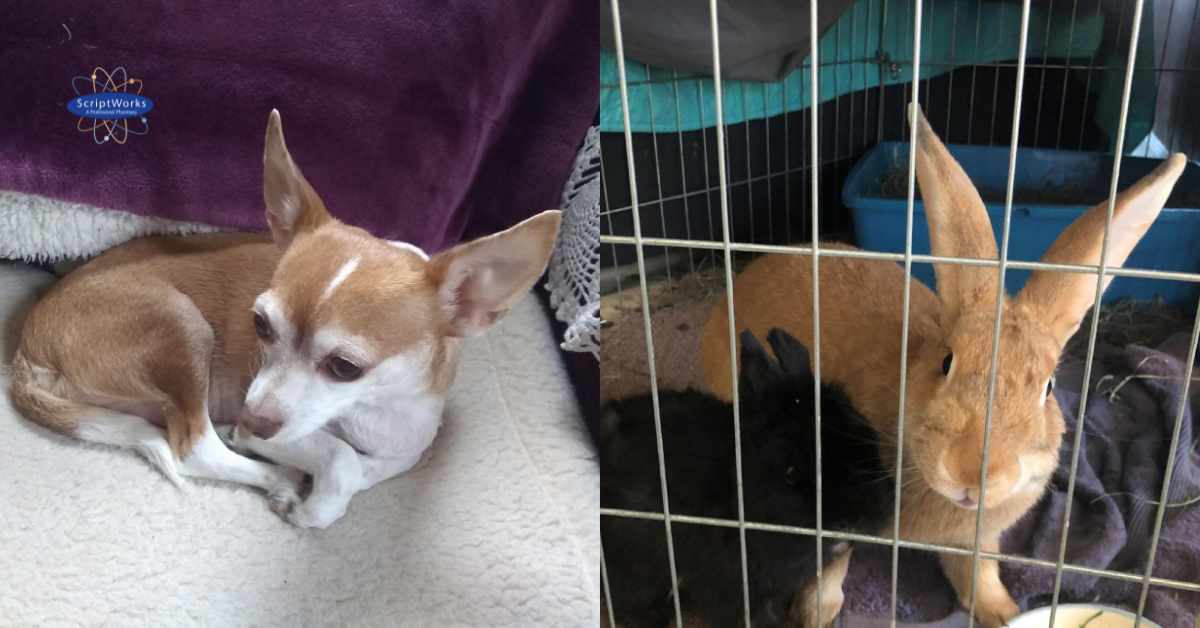
Author: Bob Brensel | President, Pharmacist | ScriptWorks
Bob Brensel, RPh, earned his Pharmacy Degree at University of the Pacific in Stockton, California in 1980. Former California Pharmacists Association’s Award Winner for Recognition of Outstanding Achievement in Compounding Pharmacy. Read More →
Veterinarians are constantly balancing clinical decisions under challenging conditions — managing animals that cannot clearly communicate their symptoms, navigating limited approved medications for off-label use, and dealing with owner constraints around compliance and cost. Moreover, for many species, especially exotic or geriatric patients, there simply are no standardized formulations that adequately meet therapeutic needs.
Whether the challenge is addressing a non-healing wound, managing a chronic inflammatory condition, or delivering medication to a resistant patient, traditional pharmaceutical options often fall short. This is especially true when medications are discontinued, not available in appropriate strengths, or unsuitable for the species or delivery route needed.
In such scenarios, the ability to work with a compounding pharmacy may provide a crucial alternative. While not a replacement for standard care, compounded medications may offer veterinarians the flexibility to tailor medications more precisely — adjusting dosage forms, combining multiple agents, or creating delivery methods suited to the specific patient and situation.
The veterinary case studies below represent real-world instances where this kind of collaboration, specifically between ScriptWorks and veterinarians, made a noticeable impact. These examples demonstrate the potentially practical benefits of thoughtful formulation — especially in cases where traditional approaches reach their limits. Each is grounded in cautious application, guided by culture reports, clinical judgment, and available peer-reviewed literature.
This is not an exhaustive list of ways we help California animals. Connect with our team to learn more, or to receive our full presentation.
Case Study: Chai the Bunny — Facial Abscess and Sinus Infection
Background:
Chai, a five-month-old rabbit, experienced recurring abscesses resulting from fractured and infected teeth. Despite multiple surgical debridements, the infection progressed into her nasal and sinus passages, complicating her prognosis. Lab cultures revealed Pseudomonas aeruginosa, a resistant and aggressive pathogen in both human and veterinary medicine.

Compounded Approach:
Amikacin 5% in a bi-phasic dental gel was used to localize the antimicrobial component directly into the oral and sinus region, potentially avoiding systemic toxicity and supporting targeted action.
Scientific Context:
Amikacin is an aminoglycoside that has shown sensitivity against Pseudomonas species in culture, and literature supports its potential for topical use. Bi-phasic gels provide a thermoreversible, mucosal-adherent base that can improve drug contact and stability in oral applications.
Outcome:
Over time, Chai’s clinical appearance improved. The inflamed areas reduced in size, and her energy and behavior stabilized. Though rabbits are particularly fragile under infection stress, this collaborative approach may have contributed to her sustained recovery.
Case Study: Prince — Burn Trauma from House Fire

Background:
Prince, a mixed-breed dog, suffered full-thickness burns along his back and flank due to a house fire. The veterinary team was tasked not only with preventing infection but also with managing pain and encouraging wound regeneration over a large surface area.
Compounded Approach:
A custom compound containing Lidocaine 2%, Phenytoin 2%, and Misoprostol 1% in a bi-phasic gel was applied twice daily. Each ingredient was chosen to target a different aspect of the injury — pain, inflammation, and tissue support.
Scientific Context:
Phenytoin has long been investigated for its possible regenerative properties in wounds, likely due to its influence on collagen deposition and fibroblast activity. Misoprostol, a prostaglandin analogue, may reduce bacterial translocation and modulate immune response at the skin barrier. The formulation aimed to promote an environment that encourages epithelialization.

Outcome:
Photo documentation showed visible changes over a five-week period — reduction in wound diameter, re-epithelialization of tissue, and eventual scar formation. By two months, Prince’s injuries appeared significantly improved under ongoing veterinary care.
Case Study: Miley — Chronic Pain in an Aging Sheepdog
Background:
Miley was a 12-year-old English Sheepdog suffering from chronic hind limb pain, stiffness, and loss of mobility. Her condition reached a point where she required assistance with basic activities, and her quality of life declined.
Compounded Approach:
With guidance from her veterinarian, Low-Dose Naltrexone (LDN) at 4 mg once daily was initiated.
Scientific Context:
LDN works as a reversible opioid receptor antagonist. While traditionally used in higher doses for addiction therapy, LDN in lower doses has been explored for its anti-inflammatory and immunomodulatory properties. Studies have suggested that it may increase endogenous endorphin release and reduce pro-inflammatory cytokines such as TNF-alpha and IL-6.
Outcome:
Miley’s improvement was described as rapid. Within a week, she showed increased mobility, alertness, and social engagement. According to her caregiver, she went on to live another two years with markedly reduced discomfort.
Case Study: Phoenix — Eosinophilic Syndrome in a Cat
Background:
Phoenix, a nine-year-old domestic cat, presented with signs of systemic eosinophilic syndrome. Symptoms included internal bleeding, open skin lesions, alopecia, and compulsive grooming behaviors, all likely tied to immune dysregulation.
Compounded Approach:
Low-Dose Naltrexone at 1 mg daily was compounded and prescribed. Over time, the dose was trialed twice daily, but no added clinical benefit was observed beyond the once-daily protocol.
Scientific Context:
The immunologic effects of LDN, particularly its modulation of T and B lymphocytes and cytokine suppression, have been studied in experimental models. While formal veterinary evidence is limited, the underlying mechanisms may warrant further exploration.
Outcome:
Phoenix demonstrated hair regrowth, wound resolution, and weight gain. According to veterinary notes, these changes were sustained as long as LDN therapy continued at the original dose.
Case Study: Abby — Post-Operative Deep Pyoderma
Background:
Abby, a six-year-old female dog, developed wound infection following a minor surgical excision. Within days, the site became erythematous, malodorous, and progressed into deep pyoderma and vasculitis.
Compounded Approach:
A customized topical spray containing Amikacin, Diphenhydramine, Misoprostol, Naltrexone, Nifedipine, and Phenytoin in a Pracasil-Plus™ base was applied twice daily.
Scientific Context:
Each active ingredient was selected for its potential therapeutic action—topical antimicrobial, anti-inflammatory, vasodilatory, or epithelial support. Pracasil-Plus™ may serve as a beneficial vehicle by maintaining skin moisture and occlusion.
Outcome:
The wound’s condition improved noticeably within one week, with continued healing through day 14. By January 3, the remaining lesion was minimal, and granulation was described as healthy and robust.
After about a year, the veterinarian observed:
“Remaining wound is very small with good granulation.”
Case Study: Equine Eyelid Lesion
Background:
An adult horse sustained a significant wound above its eye — an area prone to movement and exposure, making healing more difficult.
Compounded Approach:
Pracasil-Plus™ topical gel was applied daily to support skin recovery in the high-mobility region.
Outcome:
Within a week, images showed substantial reduction in inflammation, with evidence of skin healing and reduced lesion prominence.
Want the full veterinary case study review presentation?
Fill out the form below to receive the full Veterinary Compounding Case Studies presentation.
Interested in prescribing with ScriptWorks?
Ask about our Veterinary Portal for easy management of your prescriptions.
Trust the Best California Veterinary Compounding Pharmacy
Veterinarians across California, particularly those at some of the most respected animal hospitals in Northern California, continue to rely on ScriptWorks as a trusted resource for customized compounded medications.
Based in Walnut Creek, ScriptWorks is known for its hands-on collaboration with veterinary teams, deep knowledge of species-specific pharmacology, and commitment to patient-centered solutions.
Whether a pet requires a medication reformulated into a flavored chewable treat, an ear gel that adheres reliably, or a liquid suspension tailored for a precise dosage, ScriptWorks offers flexible and innovative options to support treatment goals. Shipping statewide and serving practices ranging from small independent clinics to large specialty hospitals, ScriptWorks delivers, literally.
Does your pet need medicine now?
SCRIPTWORKS DELIVERS.
Animals can't wait around weeks for medications.
Get prescriptions when they need them.

Weekday Local Deliveries
Walnut Creek, Concord, Martinez, San Ramon, Danville, Alamo, Lafayette and Orinda.
USPS 1st Priority Mail Overnight Mail Delivery
California (state-wide)
Need Advice?
ScriptWorks specializes in compounded medicines for animals, and creating forms that animals love. We work hand-in-hand with veterinarians every day to help solve medicine challenges for animals of every kind.
From dosage adjustments to multi-agent topical preparations, veterinarians turn to compounding when standard options fall short—whether due to species limitations, formulation gaps, or patient compliance issues. ScriptWorks stands ready to assist, with pharmacists who understand the nuances of veterinary care and the importance of a practical, case-driven approach.
ScriptWorks makes "medicine-time" easy.
Giving your pet medicine can be challenging.
We’re always searching for better ways to help you help them when they’re sick. Our experts provide animals with compounds that promote healing and well-being. Using unique dosage forms and even flavoring when appropriate for the best results.
References
- Wu, W., Jin, Y., Bai, F., & Jin, S. (2015). Pseudomonas aeruginosa. In Y.-W. Tang, M. Sussman, D. Liu, I. Poxton, & J. Schwartzman (Eds.), Molecular medical microbiology (2nd ed., Vol. 2, pp. 753–767). Academic Press. Link
- Anstead, G. M., Hart, L. M., Sunahara, J. F., & Liter, M. E. (1996). Phenytoin in wound healing. Annals of Pharmacotherapy, 30(7–8), 768–775. Link
- Marangaloo, R. G., Pinar, O., Mehmedov, T., & Or, M. E. (2024). Current pharmacotherapeutic properties of low-dose naltrexone therapy in humans and possible therapeutic and prophylactic indications in cats and dogs. German Journal of Veterinary Research. Advance online publication. Link

